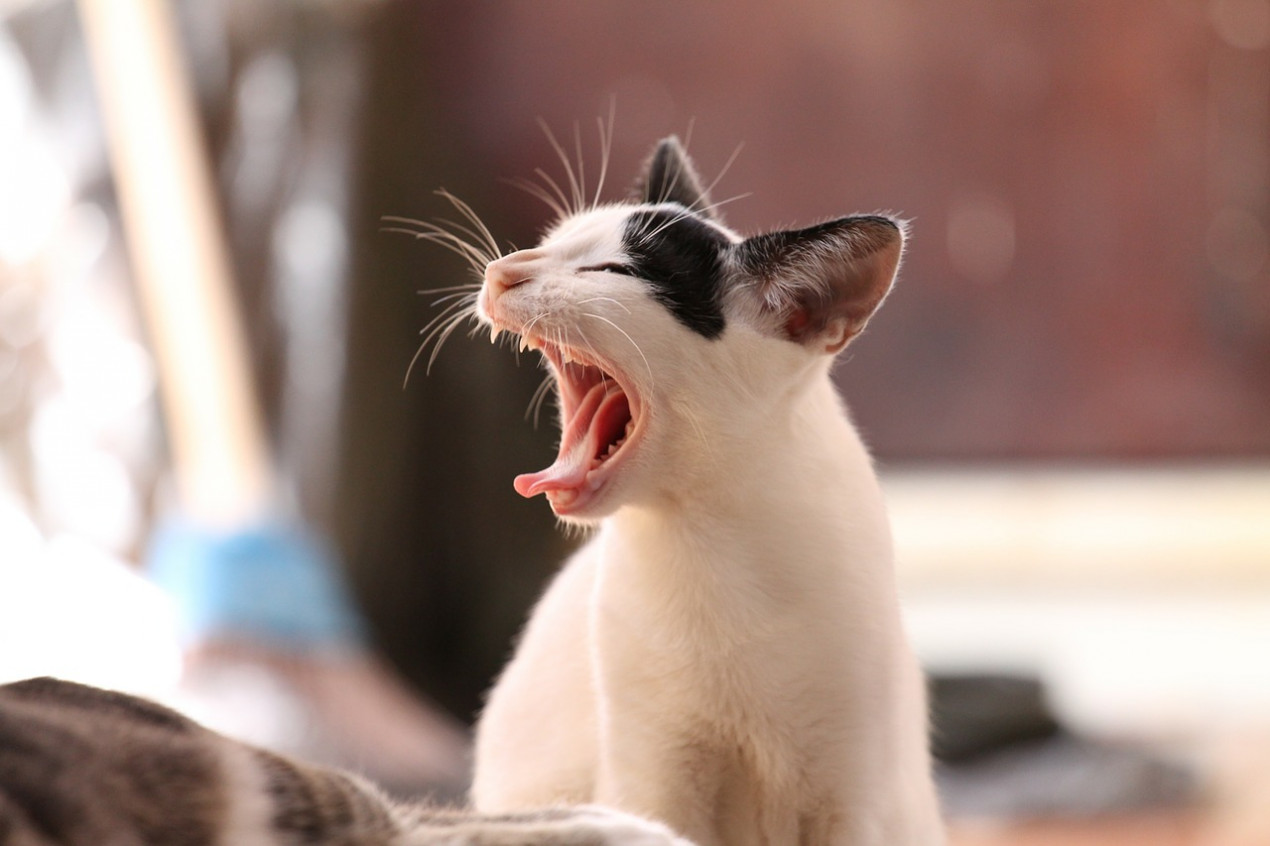
Cat choking, what's causing it and what are the signs?
Choking in cats is usually caused by a foreign object such as a bit of toy, bone or a hairball getting stuck in the throat. However, it can also be down to objects getting wrapped tightly around the neck. Symptoms of cat choking include extreme distress, pawing at the mouth and drooling. Your cat may also rub their face on the ground and gag or wretch continuously. If the object is obstructing efforts to breathe, you may also see coughing, breathing difficulties, blue mucous membranes (cyanosis) and collapse.
What if my cat is only gagging occasionally?
Intermittent coughing with periods of being fine in the middle is not a typical sign of cat choking. Choking kittens or cats with objects stuck in their throats become very agitated and will make continuous efforts to move the object.
What to do if your cat is choking?
Time is of the utmost importance if there’s a breathing obstruction in your choking kitten or cat. While first aid can be tried at home, it should not delay the journey to the vets and should not be continued for more than a minute or two as this can be the difference between life and death.
Steps you can take at home for cat choking
Firstly, restrain your cat. Choking cats of all ages will struggle, potentially causing harm to themselves and to you as they will thrash around and bite in their panic. If the object is a cable, string or other item wrapped around the neck, carefully use a pair of scissors to cut it.
If they are choking on something they’ve swallowed open the mouth and look inside. An object in the mouth such as a stick or piece of bone may be able to be retrieved with a large pair of tweezers, or broken in half to release the pressure. If a solid object is lodged at the back of the throat (e.g. rawhide), do not push at it with your fingers as you may lodge it deeper. Do not stick your fingers down the throat of your cat if no object can be seen, as this may cause damage to the delicate tissues at the back of the throat.
Heimlich manoeuvre in cats
If this doesn’t work, you need to get your cat to a vet ASAP. While in the car, if the cat cannot breathe, you can try a variation of the Heimlich manoeuvre. Only try this if your cat is collapsed and cannot breathe as it can cause damage to the chest, and your cat will need to be checked afterwards by a vet. In human medicine, for example, anyone receiving the Heimlich manoeuvre should be checked by a doctor to make sure that no ribs have been broken. If a second person is not available during the car journey, it’s more important to drive quickly and safely to the vet.
Heimlich manoeuvre steps:
- Lay your cat on their side.
- Hold your cat’s back against your stomach (head up, paws down), and, with one hand, find the soft hollow under the ribs (your closed fist should fit into this spot).
- Using the hand on your cat’s stomach, pull up and in two or three times, toward your own tummy, using a sharp thrusting motion.
- Check the mouth for foreign objects.
- If this doesn’t work and your cat loses their pulse, begin CPR at approximately 120 chest compressions per minute and continue these until at the veterinary practice.
In most cases, getting rid of the choking obstruction will allow the cat to breathe again. However, a trip to the vet is essential regardless of whether the item has been dislodged or not as there may be damage to the inside of the mouth or throat once the object is removed.
What will happen at the vets?
Your vet will examine your choking kitten or cat and confirm whether they’re choking or suffering from some sort of respiratory condition.
If they’re sure it’s a foreign object they may sedate your cat to reduce their distress and to make it easier to examine the mouth and throat. They may also take X-rays to locate the cause of the choking. In many cases, foreign objects can be removed simply by pulling them from the mouth or throat. However, surgery may be required for more serious obstructions.
In a complete obstruction, the vet may perform an emergency tracheotomy. This is a quick procedure that allows them to pass a breathing tube from the neck straight into the trachea (windpipe), bypassing the obstruction and allowing your pet to breathe until the obstruction is removed. In the worst case scenario, the vet may be able to resuscitate a cat that has stopped breathing.

